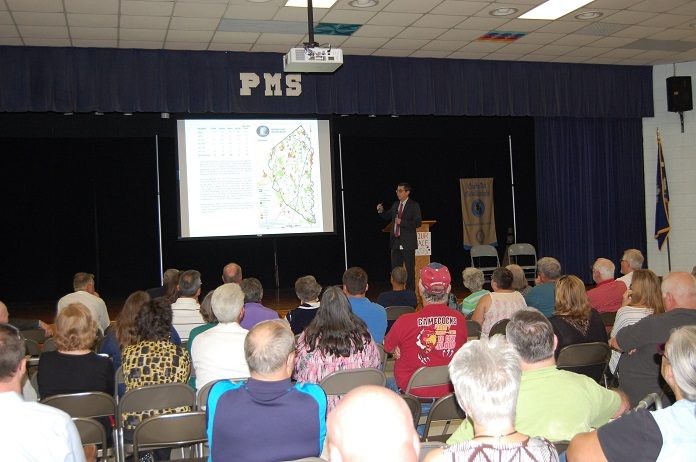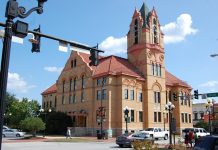By Stan Welch
A meeting held in Powdersville recently by Anderson County planning department staffers turned contentious, to the point that Sheriff Chad McBride had to prevail on the crowd to calm down. Shortly after that, the meeting was prematurely closed.
The meeting was in effect a presentation by county planning director Michael Forman and several of his staff to make Powdersville residents aware of their choices for dealing with the area’s burgeoning growth, and the problems that growth creates. The presentation was spurred by a couple of factors.
The first is the NECAP, or Northeast County Area Plan, study recently undertaken by the county planning department. That plan was an offshoot of the county’s comprehensive plan, which confirmed the growth in the northeast quadrant of the county. It was decided that additional, more detailed study of the NECAP area was called for. The area described by the acronym is defined by the Greenville and Pickens county lines to the north and east, and by Highway 8 (loosely) to the west and south. While portions of County Council Districts Four and Seven are included, the great bulk of the area is comprised of District Six, which is represented by Councilman Ken Waters.
A second factor that illuminated some of the growth’s potential impacts and problems was a proposed residential development that was brought before the planning commission a few weeks ago. The proposed townhome development, intended for a tract of approximately thirty acres, set off an uproar in the community, leading them to appear before the planning commission to oppose any approval. The planning commission voted the development down, in the absence of significant modifications.
The brouhaha over the project revealed the community’s lack of authority to impose any controls on the rampant growth, which is three times that of the county, and is projected to result in a doubling of the NECAP area’s population over the next three decades.
Forman explained to the crowd of approximately seventy five residents that they have three basic choices.
One is to maintain the status quo, leaving themselves powerless to control or even slow the growth.
At the other extreme of the spectrum Forman presented the mechanisms involved in incorporating a portion of the area as a town. At fifty five square miles, incorporation of the entire area would be very unwieldy, and all but impossible, according to Forman. The area handily exceeds the population density requirement of three hundred people per square mile, with four hundred eighty five. The method for doing so is also very complicated, involving various legislative steps, and a significant financial impact. There was little if any support evident for that approach.
The middle road, as presented by Forman, would involve zoning. That’s where things began to heat up. Forman pointed out that zoning, like incorporation, is not a silver bullet that will make all the problems associated with growth go away. “Zoning manages the use of various properties, and can manage population density over time. But it is certainly not a do all, be all solution. It does provide a certain sense of predictability as to future growth.”
A group of residents had prepared petitions requesting zoning, but a number of vociferous attendees made their opposition loudly known. Things continued to escalate until Sheriff McBride, who had several deputies on hand, spoke to the crowd, calming them down.
A check this week with county officials reveals that no petitions concerning zoning have been received yet.

















